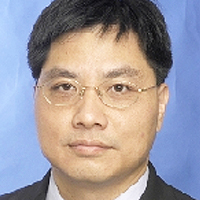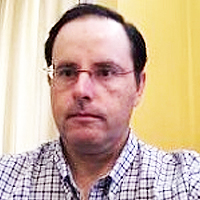Endoscopic treatment of pancreatic diseases via Duodenal Minor Papilla: 135 cases treated by Sphincterotomy, Endoscopic Pancreatic Duct Balloon Dilation (EPDBD), and Pancreatic Stenting (EPS)
Published on: 8th July, 2019
OCLC Number/Unique Identifier: 8175469767
Treatments via the minor papilla is effective where the deep cannulation via the major papilla is impossible in such cases as [1] the Wirsung’s duct is inflammatory narrowed, bent or obstructed by impacted stones [2] pancreatic duct divisum (complete or incomplete) [3], maljunction of pancreatico-biliary union with stones [4], pancreatic stones in the Santorini’s duct. In [1,2] cases, the pancreatic juice flow via the major papilla decreases, while that of the minor papilla increases. Then the size of minor papilla and its orifice shows corresponding enlargement. This substitutional mechanism is an advantage when undertaking our new method. Since the pancreatic juice flow is maintained via the minor papilla in these cases, accurate and careful endoscopic skills are necessary to prevent pancreatitis due to the occlusion of the Santorini’s duct after this procedure. We have experienced 135 cases treated via minor papilla in these 27 years, so we would like to report about its safety and efficacy.
Laparoscopic anterior transgastric cystogastrostomy for the treatment of pancreatic pseudocysts
Published on: 6th April, 2020
OCLC Number/Unique Identifier: 9272371062
Introduction: Pancreatic pseudocysts (PPs) are mostly delayed complications of acute or chronic pancreatitis and trauma. Pancreatic pseudocysts are usually managed by supportive medical treatment without surgical procedure. All the surgical interventions (percutaneous, endoscopic or surgical approaches) are based on the location, size, symptoms, complications of the pancreatic pseudocyst and medical condition of the patients. Recently, laparoscopic cystogastrostomy has become most appropriate approach especially for retrogastric pancreatic pseudocysts. In this study, we would like to report results of laparoscopic anterior transgastric cystogastrostomy by using linear articulated endo GIA stapler (Covidien medium thick purple) and versa-lifter (versa lifter®, laparoscopic retractor, manufactured by protomedlabs, France) in 14 pancreatic pseudocysts patients.
Methods: We retrospectively analyzed data of patients with pancreatic pseudocysts treated by laparoscopic anterior transgastric cystogastrostomy from September 2010 to October 2014. All of the patients were controlled for the recurrence of pancreatic pseudocysts in February 2017.
Results: 14 patients with pancreatic pseudocysts were managed by laparoscopic anterior transgastric cysto-gastrostomy. Conversion was performed in only one patient (7%). There were no symptoms and signs of recurrence of pancreatic pseudocyst during on average 43.6 months follow up time.
Conclusion: Laparoscopic cystogastrostomy by using articulated linear endo-GIA stapler and versa-lifter is a safe and effective method for management of appropriate retro-gastric pancreatic pseudocysts.
















